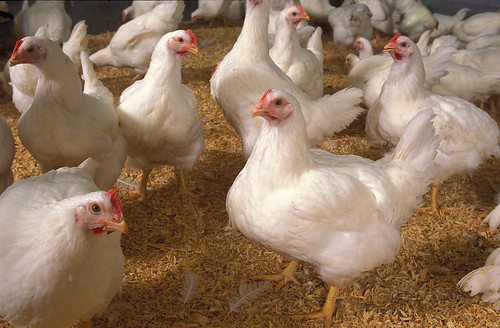
Did you know that Georgia poultry farmers produced the greatest number of chickens for meat (broilers) with 1.4 billion in 2016 followed by Alabama and Arkansas with just over 1 billion each? In all, the total value of U.S. broiler chicken production was $25.9 billion in 2016.
The poultry sector of U.S. agriculture is broad and plays an important economic role. Since September is National Chicken Month, it’s a good time to look at where they are raised and their sales value in the United States. USDA’s National Agricultural Statistics Service (NASS) keeps track of poultry destined for the dinner plate, chickens that lay eggs, the number of hatching and table eggs as well as turkeys and ducks.
Iowa chickens produced the most eggs (13.6 billion) in 2016, followed by Ohio and Pennsylvania. United States egg production totaled 101.9 billion eggs.
Moving to numbers on all chicken, turkey, duck and other poultry meat headed to plates or soup bowls around the world, according to the Poultry Slaughter 2016 Summary there were 47.4 billion pounds of chilled and frozen meat produced in 2016.
While NASS produces data throughout the year about major poultry production via the Chicken and Egg, Poultry Slaughter, Broiler Hatchery, Hatchery Production and Egg Products reports, every five years we get a sense of how many farms of all sizes have poultry or eggs. For example, according to the 2012 Census of Agriculture, the most recent, there were 174,211 U.S. farms with 1-49 laying hens. Texas had the most farms in this category with 18,058. On the other end of the spectrum at the same time, 387 farms had 100,000 or more layers.
The agriculture census is the only time we account for birds such as pheasants, quail, chukars, peacocks, ostrich and other unique species. The next census will be collected beginning later this year. Meanwhile, check out NASS, your go-to source for poultry data to learn more about production in your area.



